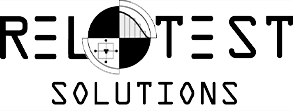According to the idea of reliability management, the term “reliability assurance” encompasses a series of process steps that ensure that product reliability requirements are put into practice throughout the entire product life cycle. Although this explicitly refers to all phases of a product’s development, the focus of assurance in reliability engineering is on product design rather than production. For reliability assurance of components, parts and entire systems, extensive tests are often carried out to rule out failure in real operation at the customer’s site. As a rule, however, experiments are associated with an enormous financial outlay and are therefore partly replaced by simulations. Stochastic or numerical simulations provide the possibility to drastically reduce the experimental effort and thus save time and costs. In the age of increasing automation, reliability assurance for mechanical systems is not sufficient.
Reliability assurance
On the contrary, two other domains are becoming increasingly important and, together with mechanics, form a mechatronic system: electronics and software. Depending on the domain, different methods and strategies are suitable for reliability assurance. While wear failures in mechanics can be described by the Wöhler model, other lifetime models are required in electronics to represent physical and chemical processes in failure behavior. In the case of purely thermal stress, for example, the Arrhenius model is an appropriate means of predicting later failures. In general, depending on the current phase of the product life cycle, different methods can be defined for reliability assurance, which I can divide into qualitative and quantitative methods. While the qualitative approaches essentially deal with the identification of weak points in the system, quantitative methods aim at the computational determination of a reliability characteristic value.

